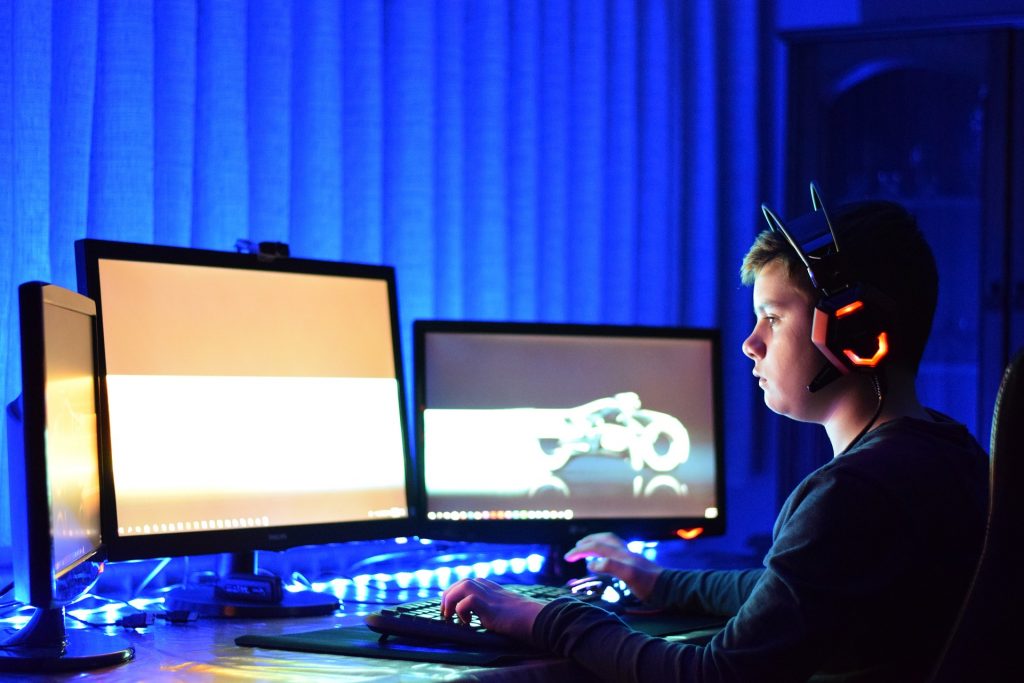
Gaming monitors have become an essential component for competitive gaming, as they can significantly impact your gameplay experience. However, simply buying a high-end gaming monitor isn’t enough to enhance your gaming performance; you also need to optimize its settings to achieve the best possible gaming experience. Here’s how you can optimize your monitor settings for gaming as well as reduce input delay:
Optimizing Monitor Settings To Reduce Latency
Reducing latency on your monitor is crucial for any gamer looking to have an optimal gaming experience. In addition to optimizing your monitor settings, there are several other ways to reduce latency and input lag on your monitor.
- Update your drivers: Keeping your graphics card and monitor drivers up to date can help reduce latency and improve performance. Check the manufacturer’s website for the latest drivers and update them regularly.
- Turn off unnecessary programs: Running multiple programs in the background can slow down your system and increase input lag. Close any programs that aren’t necessary for gaming to free up system resources and reduce latency.
- Disable V-sync: While V-sync can help prevent screen tearing, it can also introduce input lag. Disabling V-sync can reduce input lag, but may result in screen tearing, so experiment with this option to find what works best for you.
- Use a high-refresh-rate monitor: A monitor with a high refresh rate can reduce input lag and make movements on screen appear smoother. Look for monitors with a refresh rate of 144Hz or higher for the best results.
- Enable game mode: Many monitors come with a game mode setting that optimizes the display for gaming. Enabling game mode can reduce input lag and improve overall performance.
- Adjust your display settings: Fine-tuning your display settings, such as contrast and brightness, can also help reduce input lag. Adjust these settings to find the best balance between performance and visual quality.
- Use a lower resolution: If you’re experiencing high input lag, try reducing your monitor’s resolution. A lower resolution can reduce the workload on your graphics card and help improve performance.
- Upgrade your hardware: If you’ve tried all of the above and are still experiencing high input lag, it may be time to upgrade your hardware. Consider upgrading your graphics card, processor, or even your monitor to improve performance and reduce latency.
Optimizing Monitor Settings For Best Visuals
- Adjust the Refresh Rate The refresh rate is the number of times your monitor updates its image every second. The higher the refresh rate, the smoother and more responsive the gaming experience will be. If your monitor has a higher refresh rate than what you currently have set, adjust it to the maximum value supported by your system. Most gaming monitors offer refresh rates of 120Hz, 144Hz, or even 240Hz.
- Adjust Brightness and Contrast Adjusting the brightness and contrast settings on your monitor can significantly impact your gaming experience. You want to make sure that you can see the details in darker areas of the game without losing detail in brighter areas. Aim for a balance between the two, and avoid using excessively bright or contrasted settings, as they can cause eye strain and make it harder to see in-game details.
- Set the Correct Resolution Ensure that your monitor is set to its native resolution, which is the maximum resolution supported by the monitor. Running the game at a lower resolution than your monitor’s native resolution can make the image blurry and pixelated, while running at a higher resolution can result in a drop in performance.
- Adjust Color Settings Color settings can impact your gaming experience, as they can impact the color accuracy and vibrancy of the game’s visuals. Ensure that you adjust the color settings based on the type of game you’re playing; for instance, a shooter game might require more vivid colors, while a horror game might require a darker, moodier color scheme.
- Calibrate Your Monitor Calibrating your monitor ensures that the colors on your screen are accurate and consistent across different applications. You can use a calibration tool or an online calibration test to calibrate your monitor. Calibration tools can be expensive, but they offer better accuracy than online calibration tests.
In conclusion, optimizing your monitor settings and reducing latency is essential for any serious gamer. By using a wired connection, updating drivers, disabling unnecessary programs, and adjusting display settings, you can significantly reduce input lag and improve your overall gaming experience.
However, if you’re looking for an additional tool to reduce input lag, consider using Timer Resolution. This tool can help decrease input lag on your PC by changing the default timer on your system, allowing your inputs to register faster. By following the steps outlined in our article on How to use Timer Resolution, you can enjoy snappier and more responsive controls in games like Fortnite, Apex Legends, and Valorant.
Remember, reducing latency is an ongoing process, and it may take some trial and error to find what works best for you. Keep experimenting with different settings and tools until you find the setup that gives you the best performance and gaming experience.